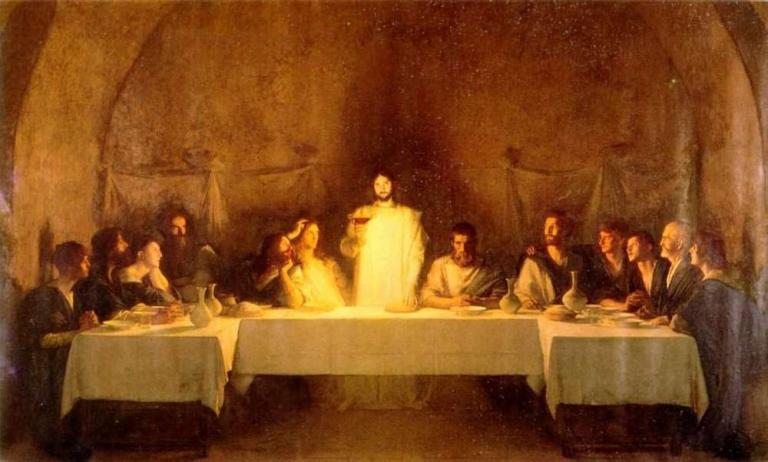Friends:
This was in response to scholars who wonder what theology can add to the historical-critical appproach to the Bible.
Gerry
What is distinctive about a theological approach to the Bible?
Gerald McDermott
18 Feb 2011
- It goes beyond the historical-critical approach.
- It uses not only historical criticism, but other hermeneutical approaches in addition.
- It recognizes the limitations of historical criticism.
- The historical-critical approach, as it has been used often since its rise in the 18th and 19th centuries, is based typically on its own presuppositions that cannot be proved and therefore are somewhat arbitrary.
i. Such as the notion, for example, that miracles are impossible, or that God does not intervene in ordinary history
- Hence the best approach to accounts of the supernatural in the Bible is to figure out a naturalistic explanation, or to assume that the story is made up to further the author’s theological agenda.
ii. and the idea that the best meaning of a text comes from establishing the original intent of the author.
iii. In most of the history of this modern method it has also been assumed that the historical critic can take a neutral and dispassionate attitude toward the text and its meaning.
- More recently some but not all its practitioners have conceded that neutrality is impossible and that every reader, even the best-intentioned historical critic, brings her own biases to a text.
-
- Therefore this approach is a tradition of its own, with its own presuppositions and methods, hence with its own faith in certain axioms that cannot be proven with scientific certainty.
i. Most historians have been recognizing this for some decades—that the old ideal of absolute objectivity is a myth.
- And that there are many historical methods, none value-free
- In other words, there is always a degree of speculation in any historical reconstruction
ii. Therefore the theological interpreter of Scripture welcomes input from historical criticism, but also wants to sift through the work of different historians, recognizing that often historians disagree, and that each era of historiography often revises the conclusions of earlier ones.
- Hence the historical interpreter of the Bible needs to speak with humility and provisionally.
- The theological approach recognizes that it is a set of books written by faith communities for the purpose of faith.
- Therefore someone with faith might have certain insights, especially when reading and debating its meaning within a faith community, that might not otherwise obtain.
- Perhaps a comparable situation obtains when a feminist tries to interpret a feminist work, or a Marxist a Marxist work.
i. Sometimes the view from the inside gives a certain hermeneutical advantage.
- while at the same time valuing perspectives from the outside of that faith community—Christian, feminist or Marxist
- Theologians when reading Scripture take their cue in part from the apostolic witness, which insists that recognition of the reality of Jesus’ resurrection opens up a new and different perspective on the rest of the Bible
- “After he was raised from the dead, his disciples remembered what he had said and what it meant.” (paraphrase of John 2.21-22)
- Throughout the NT, authors give new and fresh meaning to OT texts, based on their experience of the crucified and risen Jesus.
i. Often the meanings are somewhat or wholly different from what a historical critic would say was the original intent of the OT author.
ii. So what does the OT text mean?
- The theological interpreter might say there is a plurality of meaning
- The original intent of the author (if that can even be discerned)
- The NT interpretation of that text
- The later church’s theological interpretation of the text as it fits into the overall proclamation of the gospel in Christian doctrine.
i. This is equally important for theology, since even in the early church new meaning emerged from liturgical participation in the life of the believing community
- “When he was at table with them, he took bread, blessed and broke it, and gave it to them. Then their eyes were opened . . . “ (Lk 24.30-31)
iii. Thus interpretation of the Bible goes far beyond, but does not exclude, historical interpretation, for the theological interpreter.
- In other words, it uses the methods of religious studies methods, but is not limited to them.
- It acknowledges the plurality of voices and stories in the Bible, which sometimes appear to conflict with one another (e.g., androcentric and gynocentric perspectives on the story, as in Ruth; stories in which YHW’s direction seems direct and those in which it is hidden, as in Esther; those where evil is explained [Deuteronomy] and those where it is a mystery [Job]; and those asserting Israel’s privilege and those where God has concern for the nations, as in Jonah), but also holds that the best parameters for proper interpretation come from Scripture itself.
- In other words, this is the recognition that the Bible has its own unique capacity for self-criticism.
- Hence the theological interpreter might adopt a hermeneutic of suspicion in initial historical examination of a pericope, but then move on to a hermeneutic of faith as she searches for the meaning of that pericope in a larger canonical context, and then in the theological tradition.
- Something like Ricoeur’s “second naivete,” in which the interpreter moves from critical understanding to a fresh encounter with the divine reality to which the text points.
i. If not experience of that divine reality, at least understanding of what is being said about that divine reality
- Therefore for a theological interpretation of Scripture, there are not one but three contexts in which proper reading takes place:
- The contemporary context outside the text, including the tradition of recent historical criticism
- The life of the Christian community as it has engaged and interpreted these texts
- The reality of Jesus Christ experienced both by the reader and the historic church, as the key to the meaning of both OT and NT texts.










